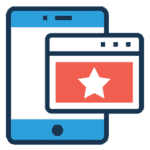Segmentation Strategies: Targeting the Right Audience with Email Marketing
Email marketing rocks! Sending emails? Super effective. Segmentation matters!
But guess what? Subscribers aren’t clones. They’re unique, with different tastes and habits. So, ditch the generic emails; it’s time to get personal because not all subscribers are cut from the same cloth. They’ve got different needs and vibes, affecting how they respond to your emails.
Wondering how? Segmentation is the game-changer. This blog? Your easy guide to why it rocks, how to do it, and the necessary tools.
Ready to level up your email game? Let’s dive right in!
Content Overview
🔹Why Email List Segmentation?
🔹Types of Segmentation
🔹Crafting Segmentation Criteria
🔹Personalization Techniques
🔹Tools and Platforms
🔹Avoiding Common Pitfalls
🔹What’s Next/Homework + Action Plan
Why bother with email list segmentation?
Let’s break down the perks.
Segmentation lets you tailor content to different subscriber groups. It helps you address their specific challenges, goals, and desires. It also makes subscribers feel valued and understood, boosting satisfaction and loyalty.
When your emails are personalized, subscribers are likelier to open and click. According to Campaign Monitor, segmented campaigns have a 14.31% higher open rate and a whopping 100.95% higher click-through rate. Translation? Better engagement and more traffic to your site!
The end game of email marketing? Convert subscribers into customers and make that revenue roll in. Nurturing leads helps build trust and move them through the sales funnel. DMA says segmented and targeted emails generate 58% of all revenue.
So you see, email list segmentation is like a secret weapon for your campaigns. It makes your emails personal, supercharges performance, and drives conversions and revenue.
Next, we’ll dive into the cool types of segmentation you can use.
Types of Segmentation for Your Email List
How do you segment your email list? What criteria do you use to divide your subscribers into smaller groups?
Depending on your goals, data, and audience, there are many ways to segment your email list.
Here are some of the most common types of segmentation you can use for your email list:
1. Demographic segmentation
This is the simplest and most basic type of segmentation, based on variables such as age, location, gender, income, education, occupation, marital status, and family size. These variables are easy to collect and measure, and they can help you understand the general characteristics of your subscribers.
For instance, you could split your email gang by location and send emails to folks in various countries or cities. Or, you could shake things up by slicing and dicing based on age – so millennials get one flavor, Gen X gets another, and baby boomers get their special treatment.
2. Behavioral segmentation
This is a more advanced and dynamic type of segmentation based on subscriber actions and engagement patterns.
Think email opens, clicks, buys, downloads, sign-ups, website hangouts, even when they abandon that online cart. We’re talking about tracking and analyzing these moves to break down your email crew based on their liking.
For instance, you could split them up by purchase history – sending different vibes to those who’ve splurged, those who haven’t, or those who have a thing for specific products. And hey, don’t forget the email engagement vibe – separate the active champs, the chill ones, and those flirting with the unsubscribe button.
3.Psychographic segmentation
This is the most complex and sophisticated type of segmentation based on subscribers’ interests, values, attitudes, opinions, lifestyles, and personalities.
These variables are harder to collect and measure but can help you understand your subscribers’ deeper motivations and needs.
For example, you can segment your email list by interests and send emails to subscribers interested in different topics, such as sports, music, or travel. You can also segment your email list by values and send different emails to subscribers with different beliefs, such as environmental, social, or political.
These are some of the segmentation types you can use for your email list. You can also combine different segmentation types to create more specific and refined segments.
Imagine this: you’re not just stopping at demographics or behavior but bringing them together. Gender and purchase history? Boom. Location and email engagement? Double boom.
The secret sauce? The more you slice and dice, the more you can dish out personalized and spot-on emails to each crew.
And guess what’s coming up next? We’re spilling the beans on how to craft your segmentation criteria. Exciting stuff, right?

FREE RESOURCE: Discover Your Digital Marketing Success Path This 2-Minute Quiz Will Reveal Where You Should Focus On Growing Your Business (+ How to Start From There!)
Cooking Up the Perfect Segments: How to Decide?
Now that we’ve discussed segmentation types let’s discuss creating your recipe. Here’s how to pick the right ingredients for your email list:
- Get Your Goals Straight: Start by figuring out what you want from your email campaign. Are you pushing a new product? Trying to get more sales? Define your goals, and you’ll know whom to talk to—for example, aiming for more product sales. Segment those who’ve shown interest or bought similar items.
- Pick the Good Stuff: Now, choose data points that match your goals. What info do you have that can help you make meaningful segments? Think about your subscribers’ behavior, preferences, or feedback. Want more email engagement? Segment by open rates, click-through rates, or feedback scores.
- Find That Sweet Spot: Don’t go overboard! Balance is key. How many segments do you need? Too many can be a headache; too few won’t cut it.
Also, consider how often you should update your segments to boost loyalty. Segment by purchase frequency, recency, and value, but sprinkle in preferences, behavior, and feedback too.
These tips will help you create segments that work magic for your email campaign.
Next, we’ll dive into personalizing your emails for each segment.
Personalization Techniques in Email Segmentation
1. Dynamic Content
Personalized tags are like magic wands, turning a basic message into a personalized jam.
This type of dynamic content adapts to each group, ensuring subscribers get a custom experience.
From tweaking images to adjusting offers, it crafts an email that hits the right notes for individual tastes.
Example: Picture an online store with various products. Thanks to dynamic content, tech enthusiasts might see the latest gadgets, while fashion lovers get a peek at the newest clothing. One email with diverse content—tailored to everyone’s liking.
2. Doing Personalized Subject Lines
The subject line is the opening act of your email show—a chance to grab your audience’s attention.
Personalized subject lines, tuned to each subscriber, can boost open rates and pull recipients into your email story.
According to a study by Experian, personalized subject lines can increase open rates by 26%.
For example, you can use personalization tags to include the subscriber’s name or location in your subject lines, such as “Hey John, check out these deals for you in New York” or “Happy birthday, Sarah! Here’s a special gift for you”.
You can also use dynamic content to include relevant information or offers in your subject lines, such as “You left something in your cart. Don’t miss this 20% off coupon” or “You bought this product. You might also like these”.
When the subject line matches personalized content, it creates a seamless flow that keeps the audience hooked.
Example: Imagine a travel agency tailoring subject lines based on past destinations. A beach lover might see “Escape to the Sun: Exclusive Beach Getaways Await You.”
It catches the eye and speaks directly to what the recipient loves.
3. Watch Recipient Behavior
Recipient behavior is like the maestro leading the orchestra of personalized responses. Understanding how subscribers interact with your emails—clicking on links, engaging with content, or making purchases—unlocks the potential for targeted and relevant follow-ups.
Example: A subscription service notices a group loving productivity tips. The next email for them should offer exclusive insights into boosting work efficiency, showing you get what they’re into.
Tools and Platforms for Effective Email List Segmentation
Mailchimp
Imagine a conductor’s baton that’s not just easy on the eyes but also knows its way around precision. That’s Mailchimp for you. Its user-friendly interface lets you seamlessly split your audience based on various criteria, turning your segmentation process into a melody of ease.
HubSpot
Meet the maestro of marketing platforms – HubSpot. Offering dynamic list segmentation ensures your messages hit the right notes for each segment of your audience, creating a finely tuned harmony that resonates.
Litmus
In the world of email marketing, Litmus stands out like a virtuoso. Beyond its powerful segmentation capabilities, Litmus adds a touch of brilliance to your entire email creation and testing process.
Constant Contact
Think of Constant Contact as the seasoned violinist in your orchestra. It may not grab all the headlines, but its reliable performance in list segmentation and user-friendly approach make it a valuable addition to your ensemble.
Campaign Monitor
Here’s the percussion section of your marketing orchestra – Campaign Monitor. Its robust features, including smart segments and personalized content options, add rhythmic precision to your email campaigns.
Avoiding Common Pitfalls
Let’s talk email list segmentation without the fancy moves. Even pros can trip on some common slip-ups. So, we’re diving into the nitty-gritty.
1. Don’t Overcomplicate Segmentation
Thinking of slicing your audience into too many pieces? It sounds smart but can lead to a communication mess. Each segment needs its content, and too many slices can dilute your message. Keep it simple—meaningful and actionable segments.
2. Keep Data on Point
In the data world, accuracy is key. Neglecting it can steer your ship off course. Outdated info messes up your segments and can lead to misguided campaigns. Keep your data clean with regular audits and updates.
3. Watch Subscriber Actions
Ignoring what your subscribers do is like sailing blindfolded. Opens, clicks, interactions—these are your guiding stars. Ignore them, and your segmentation might miss the mark. Adjust based on what your audience is up to.
4. Adapt as You Go
Smooth sailing means adapting to changes. Sticking to a plan without adjustments is a common mistake. Audience preferences change, industries shift, and seasons impact engagement. Stay flexible to keep your segmentation in sync.
5. Test and Improve
Skipping testing and tweaking is like sailing without a map. A/B test, look at results, and tweak your strategy. Missing this step means missed chances to improve your campaigns.
Now, let’s sail smoothly through these pitfalls with practical guidance:
– Regular Audits: Keep things in check with regular audits of your segmentation criteria and data to ensure accuracy.
– Behavioral Analysis: Pay attention to what your audience does. Behavioral analysis should be a key part of your segmentation strategy.
– Flexibility in Strategy: Stay flexible. Adapt your segmentation strategy based on evolving factors. It’s not set in stone.
– Iterative Testing: Test, refine, repeat. Embrace iterative testing to improve your segmentation approach constantly.
Homework/Action Plan:
- Give your current segmentation criteria a spin.
- Lay down the goals for your next email gigs. Determine if it’s a product drop, sales boost, or a good ol’ engagement party.
- Dig into how your subscribers behave. Watch for opens, clicks, and the sweet sound of purchases.
- Incorporate personalized subject lines in your emails. Action: Use subscriber names or relevant details
- Embrace A/B testing for segmentation strategies. Test different criteria and analyze performance.
If you fancy a chat about your social media endeavors, feel free to schedule a free consultation. Excited to lend a helping hand! 🌟
- Take this 2-minute Quiz to Determine Where to Focus on Growing your Business.
- Schedule a free call with Jennie today!
Rate, review, and subscribe to Apple Podcasts.
If you like what you hear on the podcast, please consider rating and reviewing my show! Woo Hoo! Click here, scroll to the bottom, tap to rate with five stars, and select “Write a Review.” I would love to hear what episodes you enjoy the most!
If you still need to do so, please subscribe to the podcast. I’ll be adding new content weekly. If you’re not subscribed, you’ll likely miss out. Subscribe now!
























